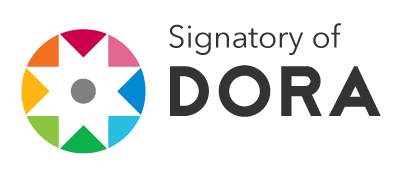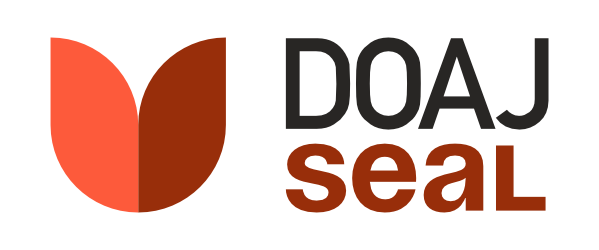Full-text of the article is available for this language: Español.
COVID-19 risk groups and their strategies for navigating information overload during the first year of the pandemic in Chile
Received:
9 November 2022,
Accepted:
25 January 2023,
Published:
4 February 2023

Abstract
As a part of the EIS-COVID project on the access and use of information during the COVID-19 pandemic in Chile, the objective of this paper was to ascertain how people’s informational environment was constructed during the first stage of the pandemic. It discusses the results of a qualitative study of people belonging to risk groups for COVID-19: people over 18 and under 65 with chronic diseases (hypertension and diabetes) and people 65 and over. Ninety semi-structured interviews were conducted in the Metropolitan and Valparaíso regions between September 2020 and January 2021. The results reveal the problematic nature of the information overload encountered by these groups and the strategies they used to navigate it: a) information avoidance; b) content corroboration and active search for reliable sources; and c) differentiated media use.
Keywords: COVID-19 Pandemic, Chronic Disease, Health Communication, Access to Information, Information Avoidance, Chile
Categories: Policies, Management
References
1. World Health Organization. WHO checklist for influenza pandemic preparedness planning [Internet]. Switzerland: WHO; 2005 [citado 26 ago 2022]. Disponible en: https://tinyurl.com/2cx8utas.
2. Organización Panamericana de la Salud. Marco de preparación para una Gripe Pandémica [Internet]. 2021 [citado 26 ago 2022]. Disponible en: https://tinyurl.com/m5h8cmzb.
3. Almeida-Filho N. Syndemic, infodemic, pandemic of COVID-19: Towards a pandemiology of emerging diseases. Salud Colectiva. 2021;17:e3748.
Crossref
| PubMed
| Google Scholar
4. World Health Organization. Infodemic [Internet]. 2021[citado 26 ago 2022]. Disponible en: https://tinyurl.com/496dj265.
5. Zarocostas J. How to fight an infodemic. The Lancet. 2020;395(10225):676.
Crossref
| PubMed
| Google Scholar
6. Organización Mundial de la Salud. Alocución de apertura del Director General de la OMS en la rueda de prensa sobre la COVID-19 celebrada el 11 de marzo de 2020 [Internet]. 2020 [citado 26 ago 2022]. Disponible en: https://tinyurl.com/f2x6rrum.
7. González Suazo L. Desde el estallido social chileno a la pandemia COVID-19: aproximaciones de un cambio profundo. Revista de Comunicación y Salud. 2020;10(2):417-429.
Crossref
| Google Scholar
8. CADEM. Encuesta Plaza Pública: Cuarta semana de Febrero Estudio No. 320 [Internet]. 2020 [citado 7 sep 2022]. Disponible en: https://tinyurl.com/h67dkybv.
9. Lagos C. Pandiorismo: O periodismo en tiempos de pandemia. Anales de la Universidad de Chile. 2020;(17):335-355.
10. Grassau D, Valenzuela S, Bachmann I, Labarca C, Mujica C, Halpern D, et al. Estudio de opinión pública: Uso y evaluación de los medios de comunicación y las redes sociales durante el estallido social en Chile. Santiago: Pontificia Universidad Católica de Chile; 2019.
11. Consejo Nacional de Televisión. Anuario estadístico: Oferta y consumo de televisión 2019 [Internet]. 2020 [citado 25 may 2022]. Disponible en: https://tinyurl.com/2weeeu6y.
12. Consejo Nacional de Televisión. Anuario estadístico: Oferta y consumo de televisión 2020 [Internet]. 2021[citado 25 may 2022]. Disponible en: https://tinyurl.com/229pmv6e.
13. CADEM. Estudio: Medios de comunicación en coronavirus [Internet]. 2020 [citado 18 sep 2022]. Disponible en: https://tinyurl.com/3bve5nb4.
14. Rocamora V, Broitman C, Olivares Y, Toloza MP. Comunicar el riesgo sobre el SARS-COV-2: informes televisados del Ministerio de Salud chileno. Cuadernos.info. 2022;(52):69–90.
Crossref
| Google Scholar
15. López-García X, Costa-Sánchez C, Vizoso Á. Journalistic fact-checking of information in pandemic: Stakeholders, hoaxes, and strategies to fight disinformation during the Covid-19 crisis in Spain. International Journal of Environmental Research and Public Health. 2021;18(3):1-15.
Crossref
| PubMed
| Google Scholar
16. Lang A. The limited capacity model of mediated message processing. Journal of Communication. 2000;50(1):46-70.
Crossref
| Google Scholar
17. Eppler M. Information quality and information overload: The promises and perils of the information age. En: Cantoni L, Danowski J, ed. Communication and Technology. Berlin: De Gruyter Mouton; 2015. p. 215-232.
Crossref
| Google Scholar
18. Zhang X, Ma L, Zhang G, Wang GS. An integrated model of the antecedents and consequences of perceived information overload using WeChat as an example. International Journal of Mobile Communications. 2020;18(1):19-40.
Crossref
| Google Scholar
19. Swar B, Hameed T, Reychav I. Information overload, psychological ill-being, and behavioral intention to continue online healthcare information search. Computers in Human Behavior. 2017;70:416-425.
Crossref
| Google Scholar
20. Chae J. Who avoids cancer information?: Examining a psychological process leading to cancer information avoidance. Journal of Health Communication. 2016;21(7):837-844.
Crossref
| PubMed
| Google Scholar
21. Farooq A, Laato S, Islam AKMN, Isoaho J. Understanding the impact of information sources on COVID-19 related preventive measures in Finland. Technology in Society. 2021;65:101573.
Crossref
| PubMed
| Google Scholar
22. Bawden D, Robinson L. Information Overload: An introduction. Oxford Research Encyclopedia of Politics [Internet]. 2020 [citado 18 sep 2022]. Disponible en: https://tinyurl.com/y22kejfj.
Crossref
| Google Scholar
23. Khaleel I, Wimmer BC, Peterson GM, Zaidi STR, Roehrer E, Cummings E, et al. Health information overload among health consumers: A scoping review. Patient Education and Counseling. 2020;103(1):15-32.
Crossref
| PubMed
| Google Scholar
24. Mohammed M, Sha’aban A, Jatau AI, Yunusa I, Isa AM, Wada AS, et al. Assessment of COVID-19 information overload among the general public. Journal of Racial and Ethnic Health Disparities. 2022;9(1):184-192.
Crossref
| PubMed
| Google Scholar
25. Sweeny K, Melnyk D, Miller W, Shepperd JA. Information avoidance: Who, What, When, and Why. Review of General Psychology. 2010;14(4):340-353.
Crossref
| Google Scholar
26. Hornik R, Parvanta S, Mello S, Freres D, Kelly B, Schwartz JS. Effects of scanning (routine health information exposure) on cancer screening and prevention behaviors in the general population. Journal of Health Communication. 2013;18(12):1422-1435.
Crossref
| PubMed
| Google Scholar
27. Niederdeppe J, Hornik RC, Kelly BJ, Frosch DL, Romantan A, Stevens RS, et al. Examining the dimensions of cancer-related information seeking and scanning behavior. Health Communication. 2007;22(2):153-167.
Crossref
| PubMed
| Google Scholar
28. Soroya SH, Farooq A, Mahmood K, Isoaho J, Zara S-e. From information seeking to information avoidance: Understanding the health information behavior during a global health crisis. Information Processing & Management. 2021;58(2):102440.
Crossref
| PubMed
| Google Scholar
29. Golman R, Hagmann D, Loewenstein G. Information avoidance. Journal of Economic Literature. 2017;55(1):96-135.
Crossref
| Google Scholar
30. Barbour JB, Rintamaki LS, Ramsey JA, Brashers DE. Avoiding health information. Journal of Health Communication. 2012;17(2):212-229.
Crossref
| PubMed
| Google Scholar
31. Brashers DE. Communication and uncertainty management. Journal of Communication. 2001;51(3):477-497.
Crossref
| Google Scholar
32. Colón-Ramos U, Finney Rutten LJ, Moser RP, Colón-Lopez V, Ortiz AP, Yaroch AL. The association between fruit and vegetable intake, knowledge of the recommendations, and health information seeking within adults in the U.S. Mainland and in Puerto Rico. Journal of Health Communication. 2015;20(1):105-111.
Crossref
| PubMed
| Google Scholar
33. Lewis N, Martinez LS, Freres DR, Schwartz JS, Armstrong K, Gray SW, et al. Seeking cancer-related information from media and family/friends increases fruit and vegetable consumption among cancer patients. Health Communication. 2012;27(4):380-388.
Crossref
| PubMed
| Google Scholar
34. Ramírez AS, Freres D, Martinez LS, Lewis N, Bourgoin A, Kelly BJ, et al. Information seeking from media and family/friends increases the likelihood of engaging in healthy lifestyle behaviors. Journal of Health Communication. 2013;18(5):527-542.
Crossref
| PubMed
| Google Scholar
35. Jensen JD, Liu M, Carcioppolo N, John KK, Krakow M, Sun Y. Health information seeking and scanning among US adults aged 50-75 years: Testing a key postulate of the information overload model. Health Informatics Journal. 2017;23(2):96-108.
Crossref
| PubMed
| Google Scholar
36. Flick U. Introducción a la investigación cualitativa. Madrid: La Morata; 2012.
37. Pedraz A, Zarco J, Ramasco M, Palmar AM. Investigación cualitativa. Elsevier; 2014.
38. Asociación de Municipalidades de Chile. Los adultos mayores en las comunas de Chile: actualidad y proyecciones [Internet]. 2017 [citado 3 nov 2022]. Disponible en: https://tinyurl.com/48xsweh4.
39. Gobierno de Chile, Subsecretaría de Telecomunicaciones de Chile. IX Encuesta de Acceso y Usos de Internet [Internet]. 2017 [citado 3 nov 2022]. Disponible en: https://tinyurl.com/y68hvv2x
40. Spencer L, Ritchie J, Ormston R, O’Connor W, Barnard M. Analysis: Principles and processes. In: Ritchie J, Lewis J, Nicolls C, Ormston R, ed. Qualitative Research Practice: A Guide for Social Science Students and Researchers. 2nd ed. SAGE; 2013.
41. Thomas DR. A general inductive approach for analyzing qualitative evaluation data. American Journal of Evaluation. 2006;27(2):237-246.
Crossref
| Google Scholar
42. Creswell J. Research Design: Qualitative, quantitative, and mixed methods approach. SAGE; 2009.
43. Mieles M, Tonon G, Alvarado S. Investigación cualitativa: el análisis temático para el tratamiento de la información desde el enfoque de la fenomenología social. Universitas Humanística. 2012;(74):195–225.
44. Viswanath K, Lee EWJ, Pinnamaneni R. We need the lens of equity in COVID-19 communication. Health Communication. 2020;35(14):1743-1746.
Crossref
| PubMed
| Google Scholar










